Acrylic kitchen countertop: pros and cons, nuances of choice and operation
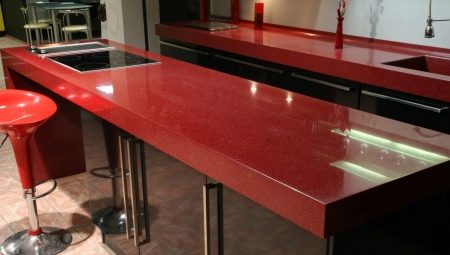
Kitchen countertops have special requirements - they must be durable, reliable and aesthetically pleasing. These criteria are met by work surfaces made of acrylic. Let's figure out what the pros and cons are inherent in these products, as well as how to choose the perfect solution for different types of kitchens.
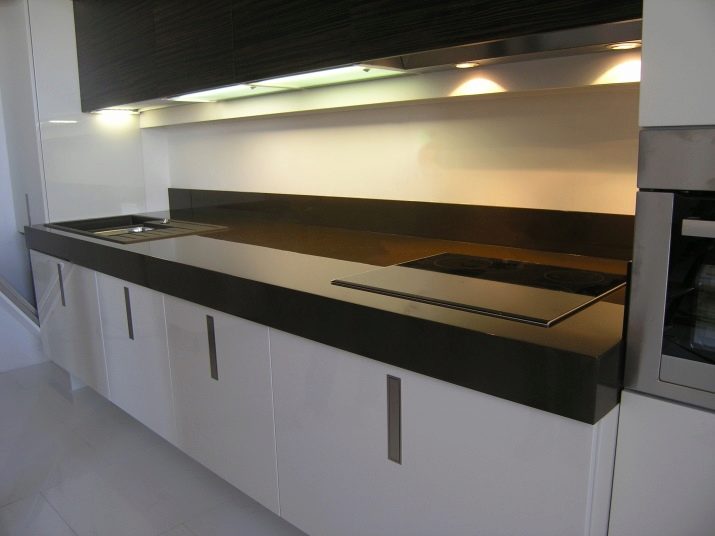
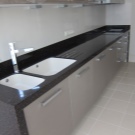
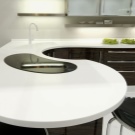

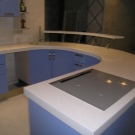
Advantages and disadvantages
Acrylic kitchen countertops are made by casting. Powdered white clay is used in their manufacture. The binders are polymers and acrylic resins. As a result of melting, a viscous mass is obtained, from which countertops of any shape and configuration are cast. The market offers worktops in a variety of colors and textures.
Other benefits of acrylic polymer products include:
- hygiene - surfaces do not absorb odors;
- aesthetics - products made by casting have no joints or seams;
- strength, comparable strength of natural stone;
- high temperature resistance (up to 150 degrees), due to which it is allowed to put hot dishes on acrylic;
- resistance to moisture, thanks to which the products do not deform throughout the entire period of operation;
- environmental Safety - countertops do not emit harmful toxins and other hazardous compounds;
- ease of cleaning - to maintain cleanliness, no specialized expensive products are required; a soft cloth, water and soap will do.


Countertops made of any materials have certain drawbacks, and acrylic is no exception.Their main drawback is their weak resistance to mechanical abrasion, due to which, with intensive use, scratches and abrasions may appear on the surface.

To restore aesthetics to the product, it will need to be polished.
The disadvantages also include the high cost - the cost of acrylic countertops is comparable in price to products made from natural stones such as marble or granite. Popular worktops made of chipboard or MDF are significantly cheaper. Another disadvantage is the "fear" of hot objects, the temperature of which exceeds 150 degrees. If you put a hot product on an acrylic surface, "marks" will remain on it, which can only be removed by grinding.
For owners of acrylic countertops Handle caustic acidic compounds with care... Once on the surface, they can stain, so acids must be removed immediately.

Acrylic in the interior
Acrylic countertops are designed to blend in with any kitchen decor. Due to the abundance of geometric shapes and colors, it is possible to choose a product for any type of kitchen. Acrylic looks noble and luxurious, thanks to which you can make any design ideas a reality. It can have a monochromatic smooth glossy or matte surface, combine various weaves of tones, imitate granite or quartz.
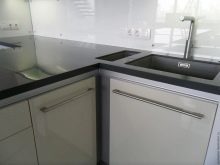
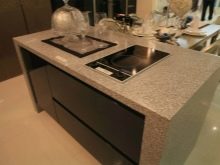
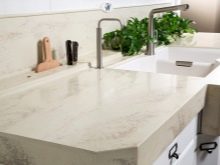
Acrylic countertops match perfectly with natural wood, MDF, chipboard, glass, plastic and metal. Due to this feature, the countertops are suitable for kitchens decorated in classic and modern styles.
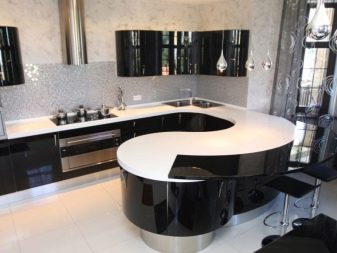
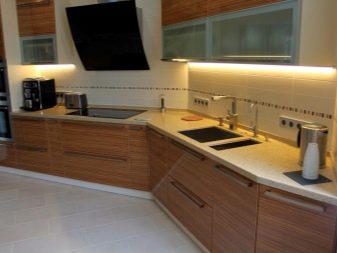
For connoisseurs of originality, countertops with a bar counter have been created - such sets have both a work area and a special counter that can function as a dining table for a small family.
Selection rules
Choosing an acrylic countertop is not an easy task, it requires knowledge of certain subtleties. Otherwise, there is a great risk of purchasing a poor quality product, which may soon lose its aesthetics. You should be aware that there are two types of acrylic work surfaces.
- Monolithic construction. Usually it is placed along several kitchen cabinets. Due to the absence of seams, such a product is characterized by increased strength.
- Prefabricated product. Such a tabletop is assembled from several canvases (usually from 2 to 4, depending on the dimensions of the surface), glued together with specialized compounds. When dry, the joints are polished - due to this treatment, they become invisible.
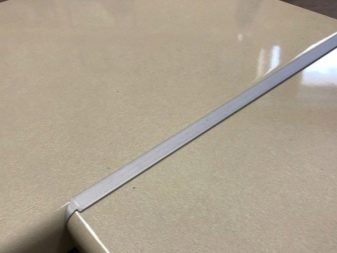

The advantage of the prefabricated structure is that it can be easily dismantled.
The next factor to look out for is acrylic layer thickness and type of substrate. Most typical countertops are 3 to 12 mm thick (the thicker the cladding, the better). In these cases, the decorative acrylic layer is installed on a substrate that is made of plywood, chipboard or MDF. A plywood base is considered more reliable and practical.

The color of the structure is also important. For example, dark glossy surfaces look elegant. However, they are considered impractical - the smallest abrasions and scratches will be immediately noticeable on such products. This will ruin the aesthetics of the entire headset, so experts recommend giving preference to acrylic countertops in light shades, made in white, gray, cream or beige tones.
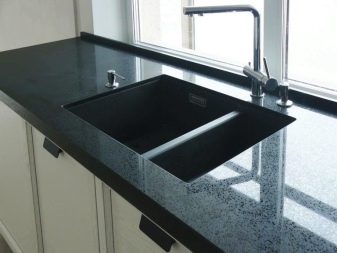
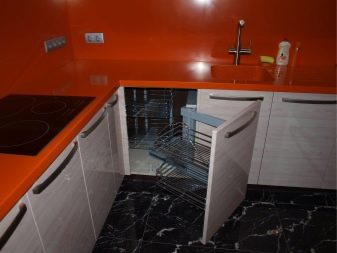

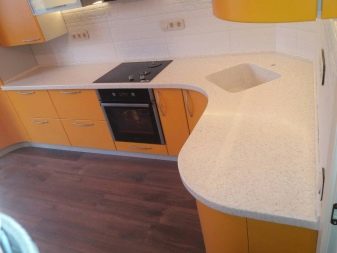
Subtleties of operation
By properly caring for your acrylic work area, you can extend its lifespan and maintain its external perfection for years to come. Despite the fact that acrylic is easy to clean, there are some subtleties of cleaning it.
- Any surface stains should be removed immediately, taking care not to dry out. To do this, you can use any gel detergent, soapy water or an ordinary damp cloth.
- Dried stains should not be rubbed with a brush or metal sponge.In this case, scratches and scuffs will remain on the surface - you will have to resort to repairing the structure.
- Do not use products containing abrasive particles - they can also leave "traces". It is not allowed to use chemically aggressive compounds based on acids and alkalis for cleaning purposes. And also oil or wax compositions are not suitable - in this case, a fatty membrane forms on the surface. Such a film will impair the aesthetics of the product, besides, marks from hands and kitchen items will be immediately noticeable on it.
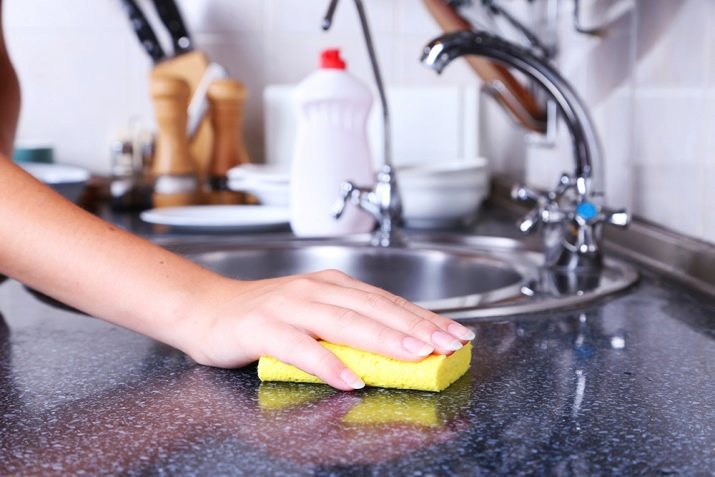
The worktop should be handled with care - when cutting meat or cutting food, you need to use cutting boards so as not to accidentally damage the surface.

Adhering to these helpful tips will ensure that the exterior of the work area remains perfect.
For information on how to choose a countertop, see the video below.








